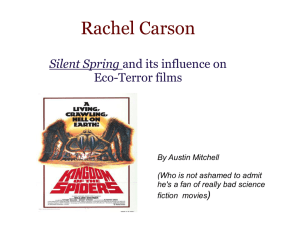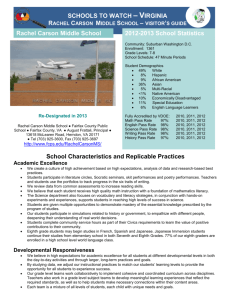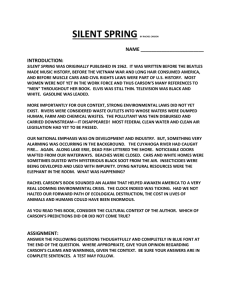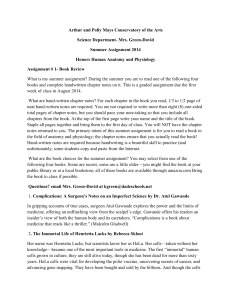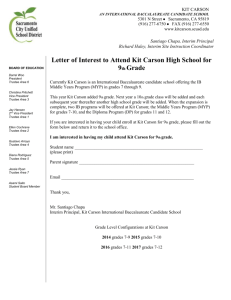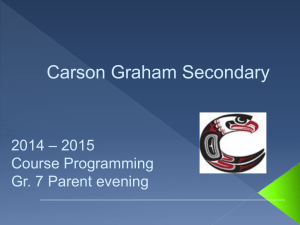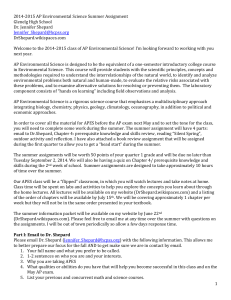nseen-Dina
advertisement
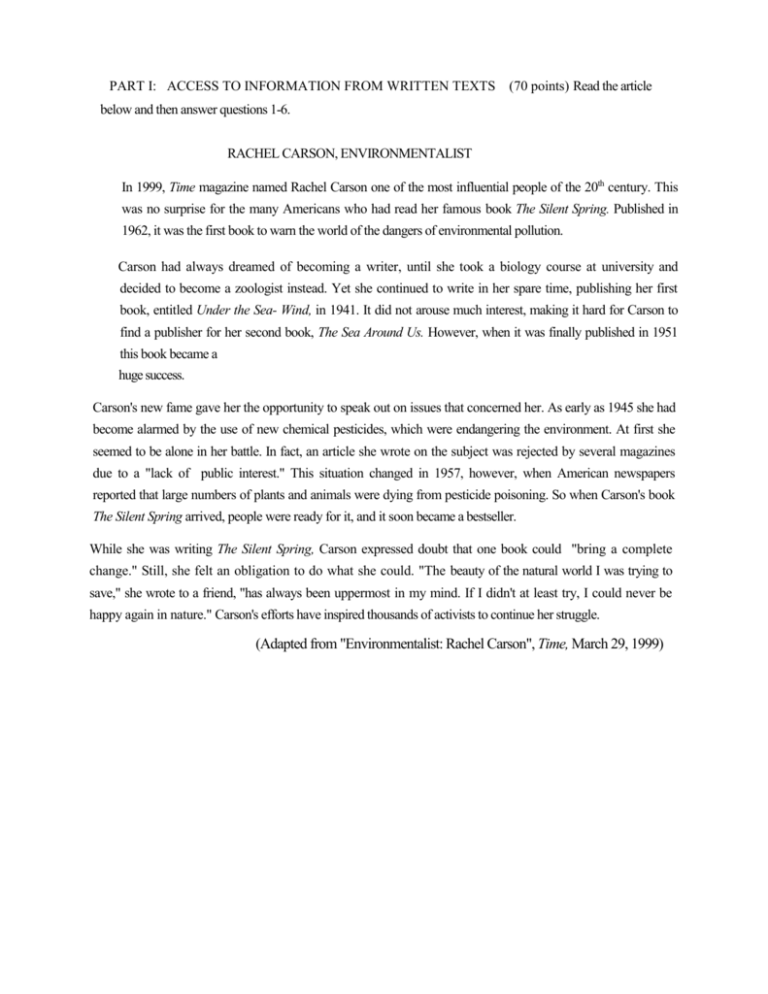
PART I: ACCESS TO INFORMATION FROM WRITTEN TEXTS (70 points) Read the article below and then answer questions 1-6. RACHEL CARSON, ENVIRONMENTALIST In 1999, Time magazine named Rachel Carson one of the most influential people of the 20th century. This was no surprise for the many Americans who had read her famous book The Silent Spring. Published in 1962, it was the first book to warn the world of the dangers of environmental pollution. Carson had always dreamed of becoming a writer, until she took a biology course at university and decided to become a zoologist instead. Yet she continued to write in her spare time, publishing her first book, entitled Under the Sea- Wind, in 1941. It did not arouse much interest, making it hard for Carson to find a publisher for her second book, The Sea Around Us. However, when it was finally published in 1951 this book became a huge success. Carson's new fame gave her the opportunity to speak out on issues that concerned her. As early as 1945 she had become alarmed by the use of new chemical pesticides, which were endangering the environment. At first she seemed to be alone in her battle. In fact, an article she wrote on the subject was rejected by several magazines due to a "lack of public interest." This situation changed in 1957, however, when American newspapers reported that large numbers of plants and animals were dying from pesticide poisoning. So when Carson's book The Silent Spring arrived, people were ready for it, and it soon became a bestseller. While she was writing The Silent Spring, Carson expressed doubt that one book could "bring a complete change." Still, she felt an obligation to do what she could. "The beauty of the natural world I was trying to save," she wrote to a friend, "has always been uppermost in my mind. If I didn't at least try, I could never be happy again in nature." Carson's efforts have inspired thousands of activists to continue her struggle. (Adapted from "Environmentalist: Rachel Carson", Time, March 29, 1999) QUESTIONS (70 points) Answer questions 1-6 in English, according to the article. In questions 4 and 6, circle the number of the correct answer. In the other questions, follow the instructions. 1. In lines 1 -10 we are told about (—). PUT AN X BY THE TWO CORRECT ANSWERS. ........ i) Carson's childhood ........ ii) Carson's work as a zoologist ........ iii) the importance of The Silent Spring ........ iv) the experiences Carson had at sea ........ v) Carson's writing career ........ vi) the influence of Time magazine (2x7 = 14 points) 2. Give TWO difficulties that Carson faced in the course of her career. Base one answer on lines 510 and the other on lines 11-18. (1) Lines 5-10: ............................................................................................................... (2) Lines 11-18: ............................................................................................................. (2x8 = 16 points) 3. Complete the following sequence of cause and effect according to lines 5-13: 1. _____________________________________________________________ 2. Carson became famous. 3. _____________________________________________________________ (2x8=16 pts) 4. We can understand that The Silent Spring deals with (— ). (i) Carson's life as a zoologist (ii) people's attitude towards nature (iii) the importance of pesticides (iv) the dangers of pesticides (8 points) 5. "Time magazine named Rachel Carson one of the most influential people of the 20 th century (lines 1-2). Give one fact from the article that shows Carson influenced other people. Take your answer from another paragraph. ANSWER:...................................................................................................................... .............. (9 points) 6. What does the writer explain about Carson in lines 19-23? (i) Why she wrote The Silent Spring. (ii) What caused a change in her attitude (iii) Why she was optimistic about the future. (iv) What changes she expected. (7 points)
